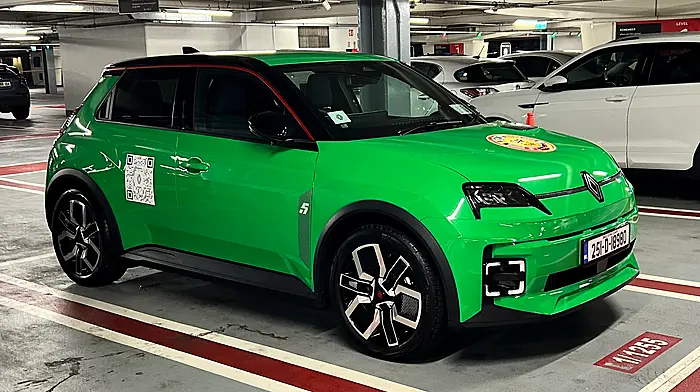BY BRIAN BYRNE
A SIT-IN last week on an Audi Technology Talk on developments in car lights brought me back a long way. Back to the mid-60s when my own first car, an Opel Rekord estate, had a six-volt lighting system that most charitably could be described as a dim glow.
All other main carmakers had already shifted to 12-volt. As Opel did itself when I got my second Rekord. With both though, for everyone driving, one of the constants was the need to change bulbs regularly, as they became dimmer with time, and in that first car’s case, regularly blew out.
The difference between then and the lights I had on my most recent review car, the 2020 Audi A6, are technically and visibly phenomenal. The Audi, for example, had HD Matrix LED headlamps, which not only dipped automatically when the system recognised an oncoming car or coming up behind one in the same direction, but constantly adapted the shape of the light pattern to suit conditions and what kind of space I was in.
That’s a long way from the dual bulbs in the Ford I learned to drive in, and later the double-filament bulbs that replaced them. I do remember in the ’70s replacing the tungsten bulbs in the Vauxhalls I was then driving with quartz-halogen ones that gave a much whiter and brighter light, albeit at a cost.
The next development in car lights came with the xenon high-intensity-discharge (HID) technology. Many of you will remember the complaints from those with more standard lighting that they were too bright and white. But for those with them, the approximation of daylight meant a driver became less tired on a long night drive.
LED technology
Last week’s Audi talk was about light-emitting diode (LED) technology, where it came from and where it’s going. First used in 1992 for the central stop light in a BMW, the optics arrived in daylight running lights (DRL) in an Audi A8 in 2004.
The very bright light was much easier to see in daylight than a standard bulb. It also allowed some playing around with style, resulting in the ‘string of pearls’ on the Audi A4 of 2007. A year later the company offered full LED headlights in its top-end R8 sports car, and that is now available across all Audi’s cars.
The Adaptive LED system, which allows for the variation in lighting pattern shape, has been around for a decade. In 2013, Audi introduced Matrix LED headlights with an adaptive high beam on its flagship A8, and in 2014 added a laser light high beam to its R8. This could show much further along the road, in a very focused beam.
Last year, 2019, the breakthrough was ‘digitising’ the operation of the whole set-up. The Digital Matrix LED provided for a faster and enhanced adaptive operation, and was introduced on the all-electric e-tron.
Rear lights
In the meantime, though, the rear lights have been also getting significant attention. When LEDs were introduced, their instant and bright operation meant a measurable safety improvement against suffering a rear-end shunt. The dynamic turn signal came to the R8 in 2012 and is now a feature in most of the brand’s cars.
In 2016 came the use of organic LEDs (OLED) on a TT, which are panels rather than light points, are therefore thinner and lighter. These are now digitised, and this allows a customisation of lights ‘signatures’ between models and even at the behest of owners.
More important is the Digital OLED capability of providing a wide range of shapes within the panels, for instance showing instant warning ‘triangles’ in an emergency. Also, as in the latest Q5, these lights have a proximity sensor, which brighten if an approaching car gets too close in traffic, for instance, and go back to normal when the car moves off again.
Introducing the talk, Audi showed a concept video in which a young teenage boy, waiting for his Dad to come back from an errand, programmed the car to project a football goal on a wall. The system became a video game which provided both a shadow ‘goalie’ and scores when he kicked his real football into the net against the wall.
Yes, a long way from that dim six-volt bulb that regularly blew, and was hardly bright enough to cast a shadow.








